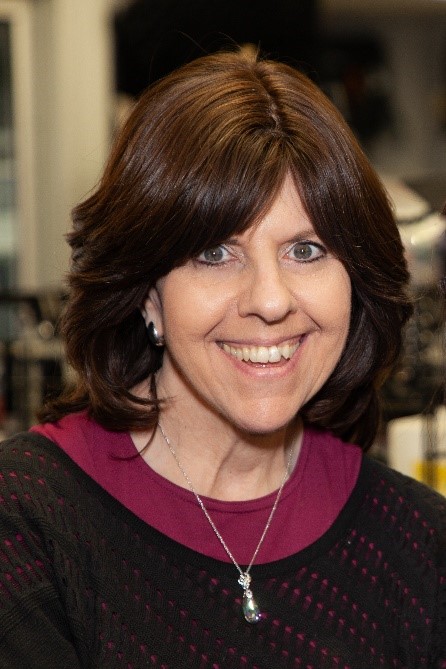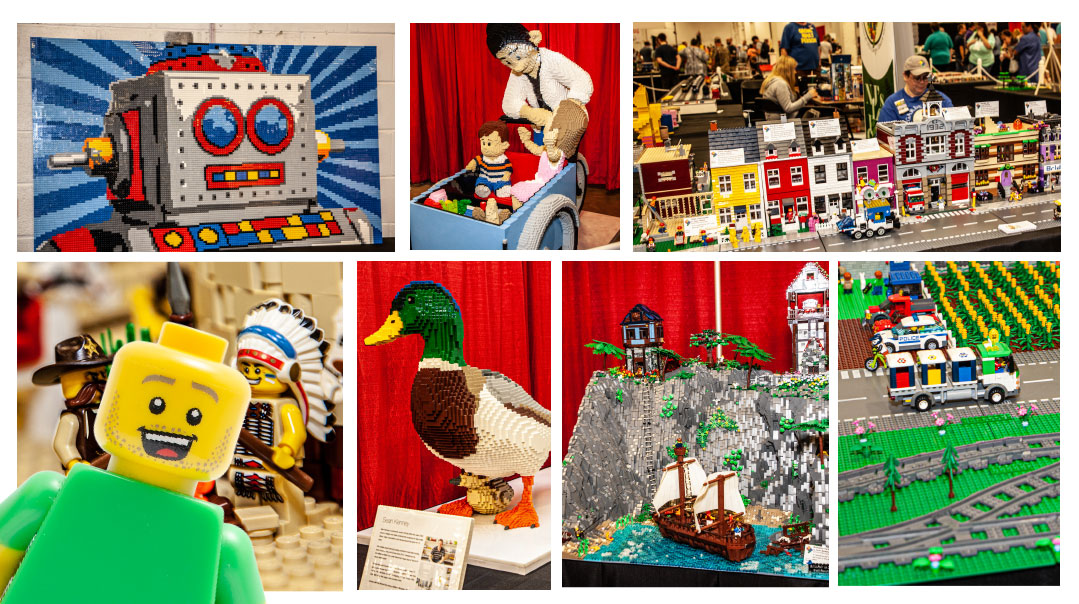Brickfair Lego Fan Expo


Larger-than-life airplanes of all colors swooped over us as my kids, grandkids, photographer Esky Cook, and I arrived at the BrickFair Lego Fan Expo. The Expo was held at Dulles Expo Center in Chantilly, Virginia, just six miles away from Dulles International Airport, where all those planes were heading. They set the stage for the excitement ahead in the 240,000 square foot exhibit hall filled with hundreds of unique creations made from millions of colorful Lego bricks.
Follow us as we indulge in North America’s ultimate Lego fan experience and speak to some of the experts behind the showcased custom creations that defy the imagination. They proudly and passionately shared their secrets of master building and personal stories with Mishpacha Jr.
More Than Just a Hobby
Amado Canlas Pinlac, known as “AC Pin,” has been building with Lego for almost 20 years. The 60+ year-old New Jersey resident never played with Lego as a kid growing up in the Philippines; he began building with them while helping his sons construct their sets. Ironically, his now-grown sons have lost interest in Lego, while it has turned into a serious hobby for him.
AC Pin shares that 15 years ago, when he would go to the store and buy himself a Lego set, he would be asked by the storekeeper, “How old is your kid?”
Admits AC Pin, “The set I was buying was actually for me. Times are different now; there’s been a shift in the perception. Today, you can actually walk into a store and say, ‘I want to buy a Lego set — it’s for me!’ Back then, the sets catered to kids; now, there are sets that cater to adults — and the prices for those start at $100!”
AC Pin’s display includes everything from a battleground, which evolved over eight years, to colorful flowers that were on display for a year at the Lego House in Billund, Denmark, the birthplace of Lego.
“One day, I got an email from Lego inviting me to be one of only 34 hobbyists from all over the world to exhibit at Lego House,” recalls AC Pin, who mentions that his wife, Marleth, is the “landscaper” for his creations. The theme of the exhibit was nature; he was one of the first to build Lego flowers.
This year alone, the Pinlacs have displayed their works of Lego art at six venues, including the Lego store at the Rockefeller Center in Manhattan and as far away as in Manama, Bahrain. He and his wife were invited and treated to an all-expense paid trip to this island country in the Persian Gulf.
“When you think about it, this was just a hobby when we started; now, look where we are,” AC Pin exclaims in wonderment. “I would say grab any opportunity and run with it. For me, it was always family first. I didn’t start building until my sons were grown.”
Lights, Action
AC Pin is in good adult company. Russell Babcock, 60, of Norfolk, Virginia, has been building with Lego since he was nine or ten.
“I like to make things move, like jousting and sword fighting,” says Russell. “I use timer LED lights. Lights and motion — that’s what gets attention!”
Transporting creations to the Brick Fair can be as difficult as assembling them. “It comes in sections,” notes Russell. “I build it in two sections and stand it up inside a cardboard box, then put it inside a bag so when the pieces fall off — which they do — you will be able to reassemble them.”
Glenn Walton, a mechanic and 30-year volunteer fire fighter from Lothian, Maryland, built an intricate Lego town made up of quaint modular buildings with his wife, Carolina. The diner was one of my favorite buildings in his fictitious town.
“It can take two to three hours to build one building,” says Glenn, who got back into Lego about ten years ago. “I probably have about $10,000 worth of Lego which I collected in the past ten years. What I have on display here is worth about $5,000. I always like to build things according to the directions and then later tweak it. Just part of my display took me about two months until I figured out what I wanted to do and how I wanted to build it.”
Glenn transported his creation in 105-quart latch box storage bins and then flipped them upside down and put each building on a lid. “Everyone’s got their way to transport it, but it is difficult. We are always looking for ways. For one of the pieces, I actually put it on a piece of board and screwed wood all around it; sometimes you’ve got to do that.”
Hats Off to Lego
Among the hundreds of exhibitors, Michael Schmidt stood out by wearing a funny hat he constructed from Lego. Three other hats he made were also on display. This 55-year-old has been building with Lego since he was ten, and he traveled from Cincinnati, Ohio, to exhibit at his fifth Brick World/BrickFair. He has exhibited in many local Lego shows, too.
Michael got into building Lego hats when his friend challenged him to build a hat out of Lego about nine years ago. I particularly liked Michael’s tan skimmer hat that sports a Western theme.
“It took me about 48 hours to build this… I put scenery around it — such as a sheriff roasting marshmallows; a prospector being held up, with the robber also being held up; a cowboy riding an ostrich; a cowgirl doing lassoing,” explains Michael. “From a distance, most people think I am just wearing a hat when I have this one on, but when I come up close, they see what’s up there, and I kinda get the ‘Wow!’ ”
Concludes Michael, “I really enjoy building with Lego. Believe it or not, I used to be an introvert. When I’m in this mode of showing people what I’ve built and talking to them, it brings out a side of me that I really enjoy. It’s fun to work on it, get the detail, and then show it off and get the interaction, especially with kids. Lego building really appeals to all ages.”
Interlocking Intergenerational Legos
Lego has been around since 1932, when Ole Kirk Kristiansen started making what became the forerunner to Lego bricks from wood at his carpentry workshop in the village of Billund, Denmark. In 1934, the company began calling the bricks Lego, from the Danish words “LEg GOdt” (“play well”). Later it was noted that in Latin the word Lego means, “I put together.” With the availability of plastics in Denmark after World War II, Lego purchased a plastic injection molding machine and began making its famous plastic interlocking blocks in 1949. It was not until 1958, however, that the Lego brick we know today was born. Since Lego bricks from 1958 can interlock with those made today, that means you and your grandparents can create something by putting both of your sets together. How cool is that!
Fun for All Ages
Not every attendee was accompanied by children. Newlywed Emma Lash from Silver Spring, Maryland, shares, “I think it’s an event that is fun for all ages. My husband and I definitely bonded over Lego. At our wedding, instead of having a guest book, we had our guests write things like ‘mazel tov’ on Lego bricks. We collected them afterward and keep them stacked on our shelf at home.” Emma’s husband, Aaron, an aerospace engineer, interjects with a chuckle, “We first merged our Lego collections, then we merged our bank accounts.”
Emma adds, “As a family therapist, I incorporate Lego in my therapy with kids to help them work out their issues by making their own ‘world.’ ”
I caught up with Shamai and Daniella Whitman and their two young sons, also from Silver Spring, as they were leaving the expo hall. “This is pretty awesome,” enthused Shamai. “We only traveled about 25 miles to see this, but we would have traveled further. It was really cool! I probably enjoyed it more than my kids!”
The Younger Set
Adults weren’t the only ones proudly showing off their Lego works of art at the Chantilly BrickFair. A miniature Hoodington Farm Fall Festival was displayed by seven-year-old Lucas Warner from Fauquier County, Virginia; he has been building with Lego since he was four. Lucas didn’t miss a detail with his fall festival activities, including a petting zoo, pumpkin patch, corn maze, hayrides, and miniature golf. He also featured a corn crib, party barn, pumpkin truck, and a food area with pizza, hot dogs, ice cream popcorn, and doughnuts, among other details. Lucas is hoping that his creation will get Lego’s attention so the company will be encouraged to make a new farm set modeled after his Farm Fall Festival — which he constructed from a number of Lego sets — because he wants to buy it.
Nine-year-old exhibitor Cindy Sabo from Atlanta, Georgia, has been designing, since the age of seven, intricate Lego models that some adults find impossible to build.
“She’s going to go to Georgia Tech and be an engineer; you watch!” says her father, Chris, although Cindy says she loves learning everything and has not yet decided upon a profession.
Cindy’s creations at the BrickFair were lit up in various sizes of LED display cases, which her parents sell under their business name, “The Brick Case.” Displayed in them were Cindy’s minifigures, The Disney Castle, NASA Apollo Saturn V, and a Bugatti Chiron sports car.
“The best thing I like about Lego is that you can use your imagination; it’s like a puzzle, and once you are all done you can see the picture,” Cindy says.
(Originally featured in Mishpacha Jr., Issue 784)
Oops! We could not locate your form.






